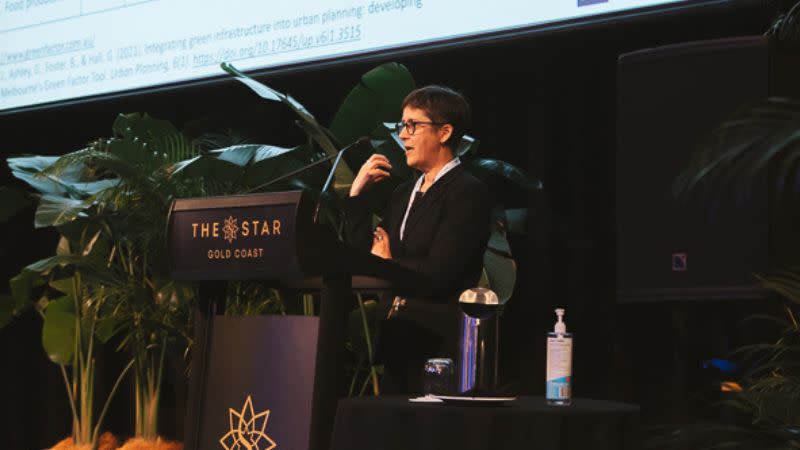Go Green, Grow Profits, Developers Urged

Developers have good reason to include green spaces in planning projects, according to University of Melbourne academic Dr Judy Bush.
Incorporating nature into urban spaces has been difficult to advocate for without an understanding of the economic and social values that green spaces can provide.
Bush is a senior lecturer in urban planning at the University of Melbourne and was presenting at the The Urban Developer’s Urbanity conference on Wednesday,
During her presentation, Nature-Based Cities: Global Study on Green Space Benefits, Bush said it was easy to think of the environmental values of incorporating nature though it was also important to understand that there were many species that required urban green spaces for their habitats and survival.
“Cities are really important spaces for biodiversity,” Bush said.
“And there are some threatened species that are only found in urban areas, so we can’t just assume that it is OK, that biodiversity is only out there beyond the city.”
Academic research over the past few years has formulated a framework for development projects that includes nature for environment (N4N), nature for society (N4S) and nature for culture (N4C).
Under this framework, developers are able to see the feasibility of incorporating nature into projects where green spaces can be used to increase property values, bring in retail and tourism revenue and limit financial losses and damages when planned and used for climate resilience initiatives such as flood mitigation.
Within nature for nature (N4N), there can be economic benefits derived from planning green spaces for the sake of biodiversity alone.
Bush referred to carbon offsets as one such example but also the Federal Government’s initiative, the Nature Repair Market, which is a program that seeks to incentivise actions that help restore and return nature to urban and other spaces.
It allows certain individuals and groups to undertake environmental actions to promote biodiversity in exchange for a tradeable certificate and came into effect with the Nature Repair Market Act in December 2023.
In terms of N4S or nature for society, green spaces if properly planned and developed can help mitigate climate change effects.

Bush reiterated a call made by others at Urbanity 2024, that appropriate planning would help not just mitigate climate change impacts but also help in terms of lowering insurance costs.
“We know that nature in cities can contribute these environmental values of cooling, water management, air quality and carbon sequestration,” Bush said.
“Nature is used by us to provide pollution treatment, to provide food production and carbon offsets.
“Also really importantly nature has been shown to promote economic activity—in London, there have been studies showing economic uplift from greening urban shopping areas.”
Even when looking at the concept of nature for culture, where using nature to engage with socially allows big environmental and social benefits, Bush argued that there were economic benefits as well.
“The economic benefits are the reduced cost of health, tourism and you have even got property value uplift,” Bush said.
“There is research showing that housing next to parks has higher property values than housing further away from parks.
“So we have very good evidence showing those values.”
Bush then said it was important to act on the evidence and work out how best to incorporate green spaces into new areas of development, urban renewal areas, established areas and other public spaces.

She said it was also important when designing such spaces that developers consider how people used such spaces throughout their lifetime, pointing to research that showed how different ages used green space for different purposes.
“We know that at different stages in our life, we have different needs for the nature in our cities,” Bush said.
The needs included exercise, adventure, social connection and facilities.
“When we are designing our green spaces we need to think about integrating all of those needs so we can provide value across the life course,” Bush said.
Much of the research and framework has made its way into planning regulations and policy at different levels of government.
She pointed to existing tools some councils had adopted, including the City of Melbourne’s Green Factor Tool used to help determine how much value any planned green spaces would contribute.
That tool may soon become part of the City of Melbourne’s planning regulations but already the idea has spread with the City of Brisbane undertaking their own version of a Green Factor Tool.
Bush said this was an important step forward and that with economic benefits laid out, developers could and should now act.
“By 2050, two-thirds of us across the globe will be living in cities,” Bush said.
“And if we want to live sustainably we need to learn how to build and transform our cities to create a more sustainable future.”














